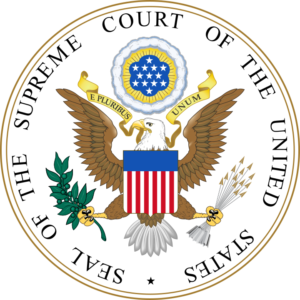Originally Published on forbes.com on April 25th, 2012
______________________________________
The kids out occupying probably are not going to be that upset by the Supreme Court decision in Home Concrete, because few of them can understand it. They really should be upset, though, because it is a great present to the sketchiest bunch of the 1%. In saying that I am respectfully disagreeing with my fellow contributor Robert W. Wood, who says the decision gives taxpayers everywhere ”a little more security”.
Here is the issue. Generally the IRS only has three years to audit you. If you leave out more than 25% of your gross income, though, they get six years. What happens if you sell something and overstate your basis in it ? We have an income tax not a gross receipts tax. So if you sell something you get to deduct your basis. Most commonly your basis is what you paid for something, but it can get more complicated than that. In terms of this discussion, though, let us say you sold something in which you had no basis for a million dollars and just flat out lied about your basis and reported only $100,000 in gain. Is that an omission of $900,000 in income for purposes of extending the statute to six years ?
That was the question before the Supreme Court. Lest you think this was about some poor little old lady who was utterly confused about her basis in the stock in all those AT&T subsidiaries she received 20 years ago, you might look at the piece I wrote about the original Home Concrete decision by the Fourth Circuit – “Should IRS Get Additional Time to Nuke Abusive Tax Shelters ?” What the IRS was going after in Home Concrete and the other cases that will be affected by this decision was phony basis concocted by the Big Four Accounting firms. I have a hard time believing there were actually real accountants involved, because in order for the things to even seem to work, you had to forget all about double entry. I did my best to explain these deals in a post about Richard Egan, the EMC founder, whom the IRS caught within three years:
The plan for eliminating capital gains works like this. You write a very large option which entitles you to receive a large premium. You use that premium to buy a very similar option. When it unwinds you will most likely have a loss, particularly after fees, but not a very large loss relative to the notional amount of the options. Get ready for the magic and if you are passionately attached to double entry remain calm. Form a partnership and contribute these two contracts to the partnership. Slowly. Carefully. One at a time. First there is that option you bought for say 150,000,000 (Never mind where you got it from). That’s easy. Your basis is 150,000,000, the partnerships basis in it is 150,000,000. Increase your basis in your partnership interest by 150,000,000. You probably want to take a break. Now you’ve got that other thing. The option that you wrote. Well you got a lot of money and it seems like it could require you to pay out a lot of money. In some ways it seems like a liability. But remember this is a partnership. You need to check Section 752. Well something that you maybe have to pay isn’t going to pass muster as a liability under 752. So now you are done. Your basis in your partnership interest is 150,000,000.
There are a number of further steps to the plan. The only problem with it is that creating basis out of thin air does not even make good nonsense. Egan’s attorney, Stephanie Denby, who was tasked with vetting the various deals made this observation:
These transactions clearly take advantage of “loopholes.” The reporting is consistent with tax law although the results are unintended. The promoters will provide tax opinion letters to avoid penalties if audited. It appears that there is a very low chance that these transactions would ever be picked up by the IRS. The promoters I have talked to have not had any audits.
>Secondly, some of the transactions focus on generating basis as opposed to capital loss. Basis is more discrete and less likely I believe to cross the IRS radar screen.
>Secondly, some of the transactions focus on generating basis as opposed to capital loss. Basis is more discrete and less likely I believe to cross the IRS radar screen.
The AICPA Statement on Standards for Tax Practice indicate that CPAs should not recommend positions that exploit the audit selection process of a taxing authority. Somebody must have cut that page out of the copy on the shelves at KPMG.
Maybe the Supremes are right about the decision, but it is hardly a victory for ordinary taxpayers. The people who hired the practitioners who were best at obscuring the audit trail are the winners in the case. Robert Wood reported:
Robert McKenzie, tax lawyer with Chicago’s Arnstein & Lehr LLP said four clients of his firm with similar issues would likely reap tax savings approaching $40 million. Indeed, some reports say the case calls into question up to $1 billion in tax revenues. The IRS was hoping to collect this huge amount in about 30 related cases involving “Son of Boss” tax shelters.
So congratulations to all the folks who paid 0% on large capital gains and got away with it. If you are a regular reader of my blog, you know that I usually root for the taxpayer, but I’m not cheering about this one.
You can follow me on twitter @peterreillycpa.































































































